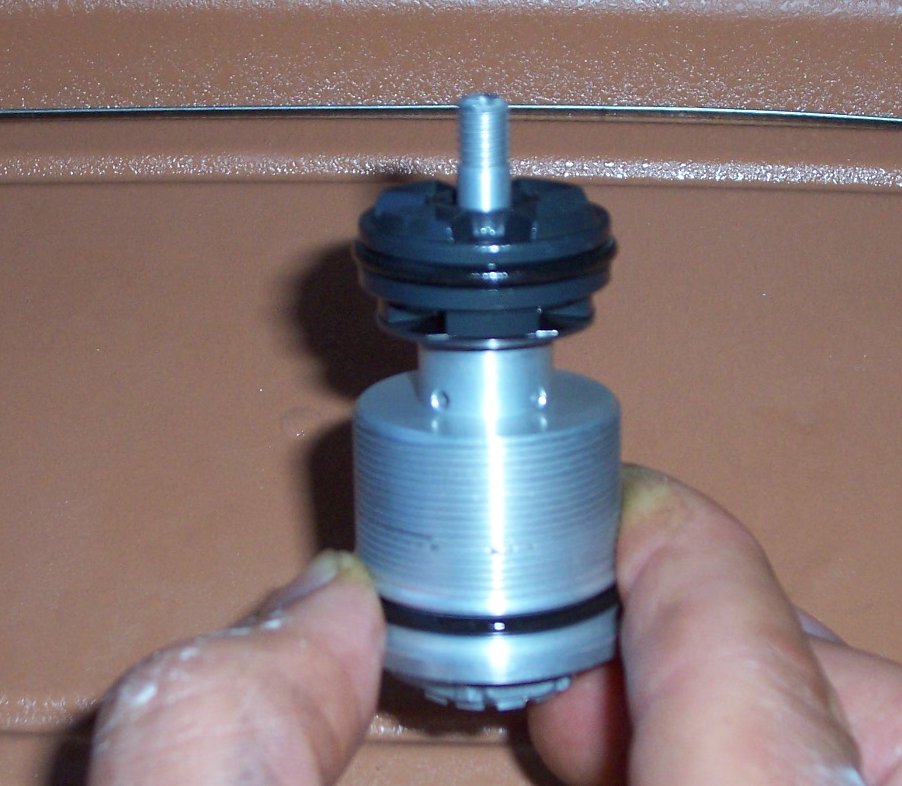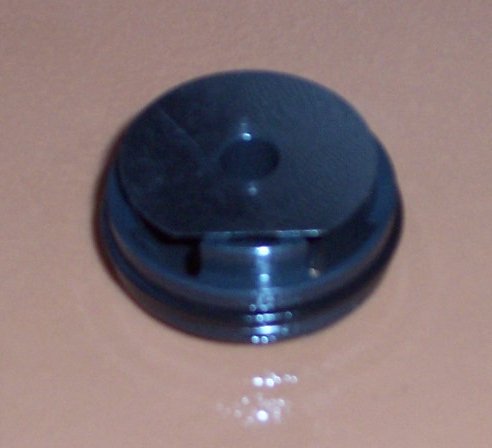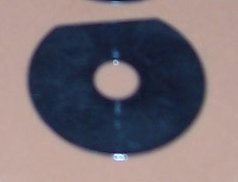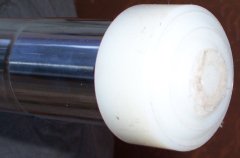DR-Z 400E/K FORK REVALVING
Dismounting fork base valve (fast way).
It' very simple: after dismounted the fork legs from the
bike, protect the top end of one leg with a plastic (or rubber, wood)
cap, then put it upside-down.
Blow away dust and dirt from the external surface of the
base valve with compressed air. If necessary, use a solvent and a brush.




This is the DRZ-E MODIFIED fork compression shim stack:
Piston
1) 24 x 0.1 with straight cut on the border, 13.5 mm
long,
aligned with one piston hole
2) 24 x 0.1 3) 24 x 0.1 4) 24 x 0.1 5)
24 x 0.1 6) 24 x 0.1 7) 24 x 0.1 8) 22 x 0.1 9)
20 x 0.1 10) 18 x 0.1
11) 16 x 0.1 12) 14 x 0.15 13) 12 x
0.2 14) 9 x 0.2
N.2 clamp shim 10 mm
Oil: Putoline Fork oil SAE 5 or equivalent. BEWARE:
using higher SAE grade oils the bleeding area dimension must be
increased.
The bleeding area in the first shim has two effects:
1) Excellent damping of small terrain roughness at low
bike speeds (= good)
2) Reduced sensitivity of the regulating screw (= bad)
Someone could like more damping at high (piston) speeds:
this can be achieved by substituting some 24 x 0.1 shims with 24 x 0.2
or 24 x 0.15 shims, and/or subtracting some little shims, starting from
the 9 x 0.2 . Remember that the whole stack thickness cannot come down
the stock value too much. Remember, also, that placing one shim instead
two, having twice tickness (i.e. the total thickness is the same), the
shim stiffness is 4 times bigger. Remember that the stack blocking nut
must be tightened very little, to avoid the axle cracking!!! In
reassembling, don't use the impact wrench: a manual wrench is better.
With this stack I have seen a big improvement in the
fork behaviour in every condition, although more high speed damping
could be useful, expecially for the heavier riders.

3) SUZUKI DRZ 400 E FORK VALVING
Stock extension stuff if ok. Unlike, there is a problem
within the compression assembly: the bleeding hole in the center of the
aluminium axle, that is occluded by the regulation needle to tune the
low speeds damping, is too small. The regulation of the low speeds is
not so effective as we expect.
There is no way to improve this performance, because a
bleeder shim will increase the bleeding area too much, and an increased
hole diameter could cause a weakness of the aluminium axle of the
stack. A good idea could be to install aftermarket base valves,
although I haven't tested it: probably they fix this problem.
For who want to fix the problem by himself, in
the following there is the modified stack.
This is the STOCK DRZ-E fork compression shim stack:
Piston
1) 24 x 0.1 2) 24 x 0.1 3) 24 x 0.1 4)
24 x 0.1 5) 24 x 0.1 6) 24 x 0.1 7) 15 x 0.1 8)
24 x 0.1 9) 22 x 0.1
10) 20 x 0.1 11) 18 x 0.1 12) 16 x 0.1
13) 14 x 0.15 14) 12 x 0.2 15) 9 x 0.2
N.2 clamp shim 10 mm
It's very stiff at low speeds, and soft at high speeds:
the flaws reported by everyone that has tested the stock drz-e fork.
I've tested one fork leg without the spring, in order to
evaluate the beahaviour of the compression stack. The correct damping
should be proportional to the relative speed of the two elements of the
fork leg. The result was:
- At low speeds the damping is too much, for every
position of the regulating screw.
- At high speeds the damping is too few.
The first problem is due to a Showa error in designing
the compression assembly. The only chance is to add a bleeding hole in
some way. I decided to cut away a piece of the first shim border, with
a straight cut. The cut line lenght is 13.5 mm, and this cut must be
aligned with one piston hole. Rotating the cut from this centered
position, the bleeding area can be reduced, if necessary. The cut can
be carried out by a grinding tool, and finished with grinding paper. Be
careful: don't over-heat the shim!

If it's the first time that the base valve is
dismounted, it's better to use an impact wrench (the base valve is very
tight), or follow the procedure to dismantle the leg (you can find it
in various websites).
If isn't the case, follow this: while a person push down
the leg, another person will unscrew the base valve. After some turn,
push the plate outside the base valve, otherwise it will raise. Unscrew
completely the base valve and dismount.








